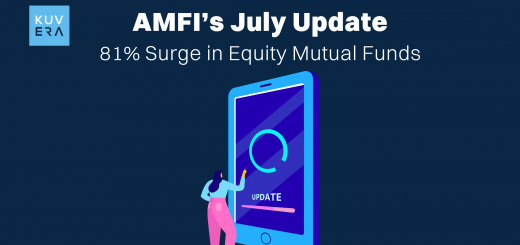You might have heard your peers asking questions about investing in mutual funds.
“Could you advise on some good investments?”
“Is investing in mutual funds easy?”
“Which mutual fund scheme is the best?”
“Are my investments growing every year?”
There can be more similar questions on mutual fund investments.
Isn’t it interesting to know that most of these questions focus on “investments” rather than the “investor.” People often ignore their goals, needs and timeframe while investing in mutual funds. While there is no one-size-fits-all answer to these questions, each question will have a different answer depending on your goals.
Think of investing in mutual funds like playing stone, paper, or scissors. In this game, only stone can beat scissors, while only paper can beat stone, and only scissors can beat paper. You need the right move at the right time, or you risk getting knocked out.
Investing in mutual funds is not just about picking investments; it’s about matching those investments to your personal financial goals.
So, let’s dive into this game and see how you can always come out on top!
What are Financial Goals?
Imagine setting off on a road trip with no destination in mind. You might discover some cool spots, but you’ll also waste a lot of time and fuel. Financial goals are your destinations in the journey of investing. They guide you, keep you focused, and ensure you’re heading in the right direction.
Common financial goals might be buying a house, saving for retirement, saving for a child’s education, saving taxes and more.
How to Differentiate between Short-Term Needs and Long-Term Goals
Financial goals can be as varied as planning a beach vacation next summer or aiming for a comfortable retirement in 30 years. Your short-term needs could be buying a new gadget or planning a wedding, and even they require a different approach than your long-term goals like purchasing a house or building a retirement corpus. It’s crucial to understand this difference so that your investments match your timeline.
Once you categorise the above financial goals, you get a clear idea of how to plan your finances and develop an investment strategy that matches your objectives.
Stephen Covey, in his bestseller, “The 7 Habits of Highly Effective People,” talks about the urgent vs. important matrix. This matrix is also known as the Time Management Matrix.
It can be seen below:
| Urgent | Not Urgent | |
|---|---|---|
| Important | I | II |
| Not Important | III | IV |
In his book, Stephen Covey points out that most people focus on Quadrant I, which consists of urgent and important tasks. And because of this, this quadrant keeps getting bigger and bigger. Meanwhile, Quadrant II, which consists of important but not urgent tasks, often gets ignored. Soon, these neglected tasks start entering Quadrant I, becoming urgent and important.
When it comes to financial goals, many people struggle with their finances because they do not plan for ‘important but not urgent’ events in their lives. To manage your finances effectively, you must classify your financial goals in terms of timelines and importance.
Why Choose Mutual Funds as your Preferred Investment Strategy?
Mutual funds are an excellent investment strategy for investors seeking to diversify their portfolios and achieve their financial goals.
They provide access to a variety of asset classes, including equities, debt, and hybrid funds, helping to spread risk and enhance returns.
Additionally, they offer the advantage of professional management, allowing even novice investors to benefit from expert insights and research.
How to Match Your Investments with Your Goals
Not aligning your investments with your goals can be very risky as it has to match your risk appetite.
For example, if you have a short-term goal, investing in equity mutual funds can be very risky since there can be a lot of volatility in the near future which can make it difficult for you to meet your goal. Imagine buying a house worth ₹1 Cr in a year and investing your money in equity mutual funds at the same time. Consider a sudden crash, like a COVID-19 pandemic, and your portfolio drops by 20%, you will not be able to meet your goal on time, and it might get postponed.
Alternatively, if your goal is retirement planning, then investing only in debt funds might not help since the debt fund’s potential returns barely beat inflation and might not match your capital appreciation needs in the longer term. For the long term, equity funds can be more suitable.
Here’s a quick guide to matching goals with suitable funds:
| Goal | Investment Avenue |
|---|---|
| Emergency Fund | Overnight, Liquid, Ultra Short Term Funds |
| Buy a Car after 1 year | Low Duration, Short Duration Debt Funds |
| Buy a House after 10 Years | Mix of Hybrid Funds, Large and Multi-cap Funds |
| Retirement after 20 Years | Mix of Large, Mid and Small Cap Funds |
The table is just an illustration. The investment avenue can vary depending on an individual’s risk appetite and goals.
A goal planner can help you devise your investment strategy through mutual funds in just a few steps. Simply enter your goal to get started, and you will find yourself one step closer to your financial goals!
What are the Mutual Fund Approaches – SIP Investing vs. Lump Sum
After matching your investments with your goals, it’s now time for execution. In the world of mutual funds, there are two main approaches: Systematic Investment Plan (SIP) and lump-sum investing.
- Lump-sum investing is like putting all your eggs in one basket. You invest a large amount at once. This can be great if you have a windfall, but it’s also risky if the market dips right after your investment.
- SIP investing, on the other hand, is like planting seeds over time. You can invest a fixed amount regularly, regardless of the market conditions. This approach can average out the purchase cost of your investments and reduce the risk of market volatility. The interval can be monthly or even quarterly. You can start an SIP with a minimum investment of ₹500 per month.
Here is a table that compares the two approaches to investing in mutual funds:
| Systematic Investment Plan | Lump - sum Investment Plan | |
|---|---|---|
| Investment Amount | Fixed amount of money at regular intervals | A large sum of money in one go |
| Market Timing | Carries market risk, but investing at regular intervals helps in averaging out market fluctuations | Carries more market risk as all the money is invested at once |
| Cost Averaging | When the market is down, you get more units for the same amount of money and when the market is up you get fewer units for the same amount. This helps in averaging out cost of the investment | No cost averaging is possible |
| Flexibility | Offers more flexibility for investors since they can be started with a small amount of money | Requires a large sum of money to be invested upfront |
| Time Horizon | Better for long-term goals | Can be suitable for short-term investment goals |
| Risk Tolerance | A better alternative for risk-averse investors | Suitable for investors who are comfortable taking considerable market risk |
An efficient investment strategy sometimes considers a combination of both investments.
How to Calculate SIP Using SIP Calculator
Wondering how much you need to invest via SIP to reach your goals?
Enter SIP calculator – your best friend in this game. It’s an online tool where you input your target amount, investment duration, and expected return rate. The calculator then tells you how much you need to invest regularly to hit your goal.
It’s simple, quick, and super handy!
Find out how SIPs can help you achieve your goals by using this free online calculator.
SIP calculators can be used by anyone to calculate the returns on their mutual fund SIP investments. The SIP return calculator can also guide investors on how much they should invest systematically every month, or at any other frequency, to achieve their future financial target.
To put it simply, the SIP calculator can be quite useful for automating complex financial planning. All investors need to do is enter a few parameters, and the mutual fund SIP calculator provides the results instantaneously. The best part is that it is free and convenient to use.
Create wealth with SIP. Start now.
Wrapping Up
Investing in mutual funds is a game of combinations, just like the Stone, Paper, Scissor game. The only tactic to win is matching your investment moves (involving your risk appetite, investment horizon, and schemes) to your financial goals with lump-sum and SIP investing.
Interested in how we think about the markets?
Read more: Zen And The Art Of Investing
Watch here: Investing in Focused Mutual Funds
Start investing through a platform that brings goal planning and investing to your fingertips. Visit kuvera.in to discover Direct Plans of Mutual Funds and Fixed Deposits and start investing today.
AREVUK Advisory Services Pvt Ltd | SEBI Registration No. INA200005166
DISCLAIMER: Mutual Fund investments are subject to market risks. Read all scheme related documents carefully. Registration granted by SEBI, membership of BASL (in case of IAs) and certification from NISM in no way guarantee performance of the intermediary or provide any assurance of returns to investors. Investments in securities market are subject to market risks. Read all the related documents carefully before investing. The securities quoted are for illustration only and are not recommendatory.












